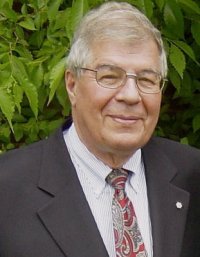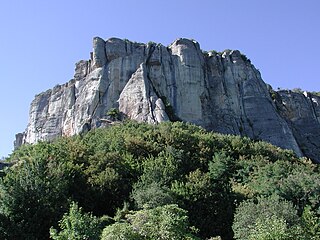Related Research Articles
The American Association of Petroleum Geologists (AAPG) is one of the world's largest professional geological societies with more than 40,000 members across 129 countries as of 2021. The AAPG works to "advance the science of geology, especially as it relates to petroleum, natural gas, other subsurface fluids, and mineral resources; to promote the technology of exploring for, finding, and producing these materials in an economically and environmentally sound manner; and to advance the professional well-being of its members." The AAPG was founded in 1917 and is headquartered in Tulsa, Oklahoma; currently almost one-third of its members live outside the United States.

The Society of Exploration Geophysicists (SEG) is a learned society dedicated to promoting the science and education of exploration geophysics in particular and geophysics in general. The Society fosters the expert and ethical practice of geophysics in the exploration and development of natural resources, in characterizing the near-surface, and in mitigating earth hazards. As of November 2019, SEG has more than 14,000 members working in more than 114 countries. SEG was founded in 1930 in Houston, Texas but its business office has been headquartered in Tulsa, Oklahoma since the mid-1940s. While most SEG members are involved in exploration for petroleum, SEG members also are involved in application of geophysics methods to mineral exploration as well as environmental and engineering problems, archaeology, and other scientific endeavors. SEG publishes The Leading Edge (TLE), a monthly professional magazine, Geophysics, a peer-reviewed archival publication, and Interpretation, a peer-reviewed journal co-published by SEG and the American Association of Petroleum Geologists.

Geoinformatics is a technical science primarily within the domain of Computer Science. It focuses on the programming of applications, spatial data structures, and the analysis of objects and space-time phenomena related to the surface and underneath of Earth and other celestial bodies. The field develops software and web services to model and analyse spatial data, serving the needs of geosciences and related scientific and engineering disciplines. The term is often used interchangeably with Geomatics, although the two have distinct focuses; Geomatics emphasizes acquiring spatial knowledge and leveraging information systems, not their development.
The United Nations General Assembly declared 2008 as the International Year of Planet Earth to increase awareness of the importance of Earth sciences for the advancement of sustainable development. UNESCO was designated as the lead agency. The Year's activities spanned the three years 2006–2009.
The year 2006 was declared the International Year of Deserts and Desertification by the United Nations General Assembly. The Year aims to raise $20 million from industry and governments and will spend half on co-funding research, and half on "outreach" activities. It will be the biggest ever international effort to promote the Earth sciences. Apart from researchers, who are expected to benefit under the Year's Science Programme, the principal target groups for the Year's broader messages are:
The Geological Association of Canada (GAC) is a learned society that promotes and develops the geological sciences in Canada. The organization holds conferences, meetings and exhibitions for the discussion of geological problems and the exchange of views in matters related to geology. It publishes various journals and collections of learned papers dealing with geology.

Ernest Richard Ward Neale, was a Canadian geologist. His scientific research contributed to the understanding of the large-scale structure of the northern Appalachian mountains of Atlantic Canada. Neale used his enthusiasm for geology to inform students and the general public about discoveries in his field through television, radio, pamphlets, booklets, news magazines, and the popular press.
Women in geology concerns the history and contributions of women to the field of geology. There has been a long history of women in the field, but they have tended to be under-represented. In the era before the eighteenth century, science and geological science had not been as formalized as they would become later. Hence early geologists tended to be informal observers and collectors, whether they were male or female. Notable examples of this period include Hildegard of Bingen who wrote works concerning stones and Barbara Uthmann who supervised her husband's mining operations after his death. Mrs. Uthmann was also a relative of Georg Agricola. In addition to these names varied aristocratic women had scientific collections of rocks or minerals.

Raymond Alexander Price, is a Canadian geologist. He has used his research on the structure and tectonics of North America’s lithosphere to produce extensive geological maps. He has also provided guidance for nuclear fuel waste disposal and reports on the human contribution to Global warming.

Calcarenite is a type of limestone that is composed predominantly, more than 50 percent, of detrital (transported) sand-size, carbonate grains. The grains consist of sand-size grains of either corals, shells, ooids, intraclasts, pellets, fragments of older limestones and dolomites, other carbonate grains, or some combination of these. Calcarenite is the carbonate equivalent of a sandstone. The term calcarenite was originally proposed in 1903 by Grabau as a part of his calcilutite, calcarenite and calcirudite carbonate classification system based upon the size of the detrital grains composing a limestone. Calcarenites can accumulate in a wide variety of marine and non-marine environments. They can consist of grains of carbonate that have accumulated either as coastal sand dunes (eolianites), beaches, offshore bars and shoals, turbidites, or other depositional settings.
The following outline is provided as an overview of and topical guide to geology:

The Environmental and Engineering Geophysical Society (EEGS) is an international, applied scientific organization that has 700 members. One of the society’s major activities is producing its annual meeting, the Application of Geophysics to Engineering and Environmental Problems (SAGEEP). It develops and distributes a peer-reviewed scientific journal, the Journal of Environmental and Engineering Geophysics (JEEG), as well as an electronic quarterly newsletter, FastTIMES. It publishes, markets, and distributes books and CD-ROMs on the application and use of near-surface geophysical technologies, both in print and electronically.

A geologist is a scientist who studies the solid, liquid, and gaseous matter that constitutes Earth and other terrestrial planets, as well as the processes that shape them. Geologists usually study geology, earth science, or geophysics, although backgrounds in physics, chemistry, biology, and other sciences are also useful. Field research is an important component of geology, although many subdisciplines incorporate laboratory and digitalized work. Geologists can be classified in a larger group of scientists, called geoscientists.

The European Association of Geoscientists and Engineers (EAGE) is a professional organization for geoscientists and engineers, established in 1951 with a worldwide membership. The association provides a platform for professionals in geophysics, petroleum exploration, geology, reservoir engineering, mining, civil engineering, digitalization and energy transition to exchange ideas and information. EAGE operates two divisions: the Oil & Gas Geoscience Division and the Near Surface Geoscience Division.

Sergo OrdzhonikidzeRussian State University for Geological Prospecting, or the Russian State University for Geological Prospecting is named after Sergo Ordzhonikidze and previously known as the Moscow Geological Prospecting Institute, is a public university based in Moscow, Russia, specialising in geology, geophysics, gemmology, ecology and other earth-science disciplines.
Geoethics is the branch of ethics which relates to the interaction of human activity with our physical world in general, and with the practice of the Earth sciences in particular. It may also have relevance to planetary sciences. It is described as an emerging scientific and philosophical discipline, consisted of research and reflection on the values that serve as the bases of behaviors and practices wherever human activities interact with the Earth system. Moreover, geoethics promotes the ethical and social roles of geoscientists in conducting scientific and technological research and practice.
Basanta Kumar Sahu is an Indian mathematical geologist, sedimentologist and a Professor Emeritus at the Indian Institute of Technology, Bombay. He is for known for his mathematical and quantitative studies in geology and the development of statistical and mathematical models. A founder member of the founded the International Association of Mathematical Geologists, he is a member of the American Association of Petroleum Geologists and the Society of Economic Paleontologists and Mineralogists. The Council of Scientific and Industrial Research, the apex agency of the Government of India for scientific research, awarded him the Shanti Swarup Bhatnagar Prize for Science and Technology, one of the highest Indian science awards for his contributions to Earth, Atmosphere, Ocean and Planetary Sciences in 1980.

Hendratta Ali is a geoscientist who does work in hydrology, aqueous geochemistry, exploration geology and equity geoscience. Her home institution is the Department of Geosciences at Fort Hays State University. She was awarded the 2021 Geological Society of America Randolph Bromery award and Fort Hays State University President’s Distinguished Scholar Award. Ali is a native of Cameroon.
Marilyn J. Suiter is a geologist whose professional career has spanned teaching, working the oil and gas industry and public services. In her leadership roles at both the American Geosciences Institute and the National Science Foundation, Suiter has worked over decades to increase the ethnic diversity of the geosciences.

Geological engineering is a discipline of engineering concerned with the application of geological science and engineering principles to fields, such as civil engineering, mining, environmental engineering, and forestry, among others. The work of geological engineers often directs or supports the work of other engineering disciplines such as assessing the suitability of locations for civil engineering, environmental engineering, mining operations, and oil and gas projects by conducting geological, geoenvironmental, geophysical, and geotechnical studies. They are involved with impact studies for facilities and operations that affect surface and subsurface environments. The engineering design input and other recommendations made by geological engineers on these projects will often have a large impact on construction and operations. Geological engineers plan, design, and implement geotechnical, geological, geophysical, hydrogeological, and environmental data acquisition. This ranges from manual ground-based methods to deep drilling, to geochemical sampling, to advanced geophysical techniques and satellite surveying. Geological engineers are also concerned with the analysis of past and future ground behaviour, mapping at all scales, and ground characterization programs for specific engineering requirements. These analyses lead geological engineers to make recommendations and prepare reports which could have major effects on the foundations of construction, mining, and civil engineering projects. Some examples of projects include rock excavation, building foundation consolidation, pressure grouting, hydraulic channel erosion control, slope and fill stabilization, landslide risk assessment, groundwater monitoring, and assessment and remediation of contamination. In addition, geological engineers are included on design teams that develop solutions to surface hazards, groundwater remediation, underground and surface excavation projects, and resource management. Like mining engineers, geological engineers also conduct resource exploration campaigns, mine evaluation and feasibility assessments, and contribute to the ongoing efficiency, sustainability, and safety of active mining projects
References
- 1 2 3 4 5 "International geoscience organizations". International Section. The Geological Society of America. Retrieved 6 November 2020.
- ↑ "Geoscience Links: Organizations". Geological Society of America. Archived from the original on 3 May 2012. Retrieved 25 November 2013.
- ↑ "Geoscience Professional Societies & Organizations". Geology.com. Archived from the original on 22 September 2012. Retrieved 25 November 2013.
- ↑ "AOGS Society". asiaoceania.org. Retrieved 12 October 2021.
- ↑ "Building community to advance women in the geosciences through the Earth Science Women's Network" (PDF). The Geological Society of America. Retrieved 11 November 2023.
- ↑ "Welcome to the Geological Society of Malaysia - Geological Society of Malaysia". gsm.org.my. Retrieved 6 November 2020.